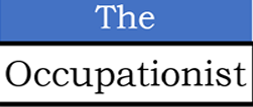The 21st century has seen offices undergo changes in their look and feel. It started with cubicles giving way to open offices. By 2015, offices had ping pong and foosball tables. Even small offices with the constraints of space and budget offered some wellness activity to their employees, like a small fish tank. The idea was to keep employee health and wellbeing in good stead.
By 2015, offices had ping pong and foosball tables.
Little is known about why, where and when did employers begin to consider office design as a tool to employee health and wellbeing. While sweatshops were thriving in Europe and Americas in the name of industrial revolution there was one industrialist in India, Jamsetji Tata who thought about employee welfare as early as 1877 when he opened the Empress Mills at Nagpur.
Few in the world are aware that the with the opening of Empress Mills about 140 years ago, the greatest contribution of Jamsetji Tata was the visionary standards it set for worker welfare.
The author believes that whoever leads the changes in office redesign, beneath it unknown to them was functioning a medical specialty that few know and understand – Occupational Health, yet everyone practices in some form or the other. Each leader has made changes to improve the health of employees working in various occupations in the organization.
Employees enjoy a well-designed workplace as it is less stressful to them.
Occupational Health, in short, is a medical specialty that deals with everything to protect worker health due to the work, workplace and working conditions.
Sometimes employers have an agenda for worker welfare and are often guided by keen sense of awareness and compassion towards people working for their enterprise and the willingness to take action to ease the pain of the worker. I have read about Jamsetji Tata and Ratan Tata demonstrating these three qualities – awareness, compassion and willingness.
Occupational Health proactively protects and improves employee health.
Employees enjoy a well-designed workplace as it is less stressful to them. The employees relate positively with the management who considers providing a well-designed workplace with the requisite facilities. This leads to an environment conducive to employees giving their best to the organization. Hence, employers should be sensitive to employee expectations and the benefits gained thereof.
Yet there are a lot of organizations that do not provide healthy workplaces. The following are the findings of the Fellowes Workplace Wellness Trend report:
- 87% of workers would like their current employer to offer healthier workspace benefits, with options ranging from wellness rooms, company fitness benefits, sit-stands, healthy lunch options and ergonomic seating.
- Employees of younger companies are less likely (34%) to be turned down when asking for in-office benefits like sit-stand desks, than employees at established companies (42%).
- 93% of workers in the tech industry said they would stay longer at a company who would offer healthier workspace benefits, with options ranging from wellness rooms, company fitness benefits, sit-stands, healthy lunch options and ergonomic seating.
A big drawback of open offices is that the need for privacy during some calls, personal or official which often causes interference and a frustrating experience. Some offices have kiosks where employees can make calls requiring privacy.
Workplace design should have DIE (Diversity, Inclusiveness & Equity) considerations that accounts for female gender, breast feeding rooms, creche etc. Consideration should also be given to trans gender employees and those with physical challenges.
Keeping employee concerns in mind, an international organization has established requirements to create productive and comfortable indoor environments. The WELL Building Standard™ (WELL) is the premier standard for buildings, interior spaces and communities seeking to implement, validate and measure features that support and advance human health and wellness.
Administered by the International WELL Building Institute (IWBITM), and certified by Green Business Certification Inc., the WELL Building Standard is the first that focuses on human health and wellbeing into design, construction and operations of buildings. According to the IWBITM, workplace design that considers air quality, lighting, views onto nature and the general layout of the interior can significantly impact on health, satisfaction, wellbeing and staff productivity.
The WELL Building Standard focuses on seven concepts of building performance: Air, Water, Nourishment, Light, Fitness, Comfort and Mind.
Implementation of WELL requires multi-functional approach and the role of Occupational Health (OH) physician is important as the entire exercise is to improve worker health and wellness, and hence productivity. Corporations not employing OH physicians should reach out to external sources for advice.
In addition, workplace design should have DIE (Diversity, Inclusiveness & Equity) considerations that accounts for female gender, breast feeding rooms, creche etc. Consideration should also be given to trans gender employees and those with physical challenges.
Research has shown that workplace design can positively influences health, wellbeing, employee satisfaction, and performance. Every workplace has a potential for improving and making a positive impact on employee wellbeing. By offering employees areas to recharge and taking their comfort into consideration, the offices can have an improved environment.
For more info, contact
____________________________________________________________________________________________
Dr Ajay Sati is an Occupational Health physician who prefers to describe himself as an Occupationist, to denote, ‘an expert in diseases and other concerns of occupations’. Dr Sati has managed health and wellness programs in industries he worked, like the atomic energy, and energy (oil & gas) in India and overseas. An experienced virtual consultation expert he was involved in many greenfield and brownfield projects providing inputs from health point of view.



